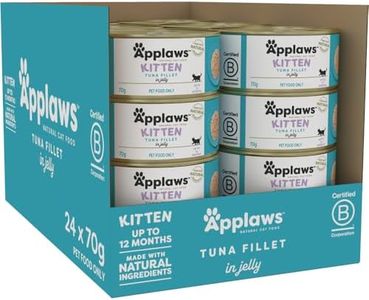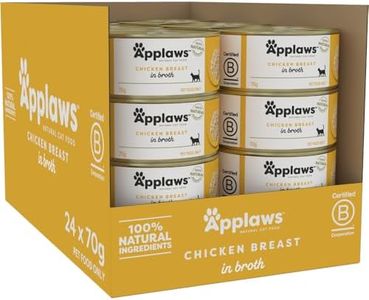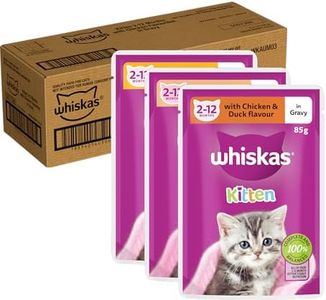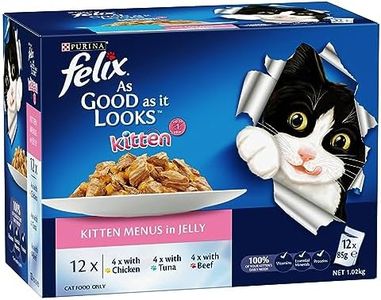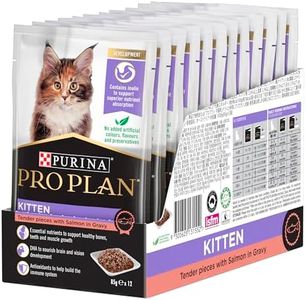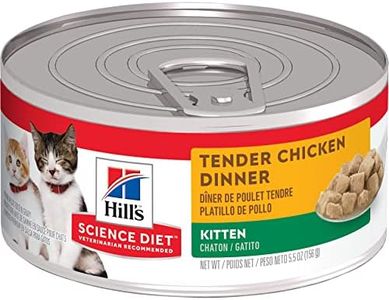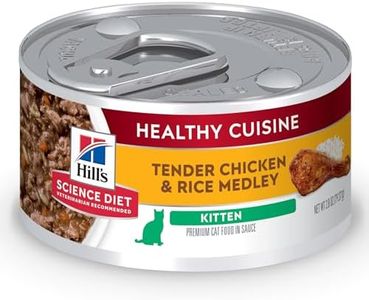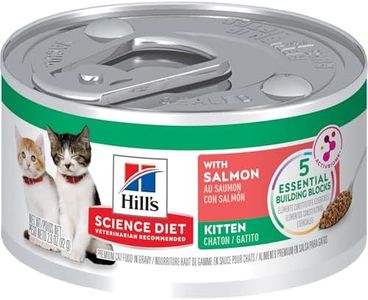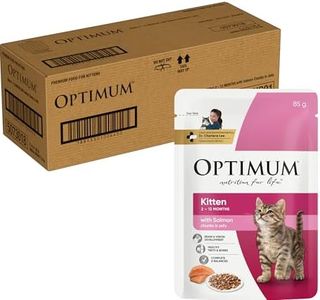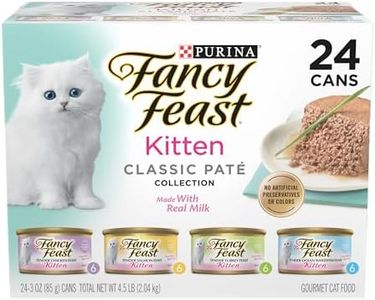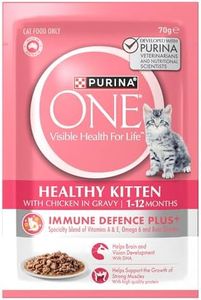We Use CookiesWe use cookies to enhance the security, performance,
functionality and for analytical and promotional activities. By continuing to browse this site you
are agreeing to our privacy policy
10 Best Wet Kitten Foods
From leading brands and best sellers available on the web.Buying Guide for the Best Wet Kitten Foods
Choosing the best wet kitten food is an important step in supporting your kitten’s healthy growth and development. Kittens have special nutritional needs that differ from adult cats, so their food should provide all the essential nutrients, the right texture for tiny teeth, and be appealing enough that they eat well. Wet food can be especially good for kittens since it’s easy to chew, helps with hydration, and often has a taste and aroma kittens find irresistible. To pick the right option, pay attention to a few essential features.Protein ContentProtein is the building block of your kitten’s muscles, tissues, and organs, which is why wet kitten foods are usually rich in protein. Higher protein content means your kitten will get the necessary amino acids for proper development and energy. Typically, good wet kitten foods have protein percentages in the range of about 8-12% (as shown on the product’s guaranteed analysis). Lower protein is generally not ideal for kittens, while higher values can indicate a meatier formula. When selecting, consider your kitten’s activity level and growth stage—energetic, rapidly growing kittens will benefit from formulas at the higher end of this range.
Fat ContentFat provides kittens with essential fatty acids for brain development, skin, and a shiny coat. It also delivers a concentrated source of calories, which is important for their growth spurts. Wet kitten foods usually have fat contents between 3-6%. If your kitten is very active or a bit lean, a higher-fat food can help maintain a healthy weight, while moderate fat levels suit most average-growing kittens.
Moisture ContentMoisture content refers to the amount of water in the food, usually about 75-85% in wet foods. This is important for keeping growing kittens hydrated—especially since they may not always drink enough water on their own. All standard wet kitten foods will provide an adequate moisture range. If your kitten is slow to drink or lives in a dry climate, ensuring you use food from the higher end of this spectrum can be extra beneficial.
Added Vitamins and MineralsWet kitten food should include a complete array of vitamins and minerals like calcium, phosphorus, DHA, vitamin E, and taurine. These support bone growth, vision, immune system, and overall health. Look on the packaging for terms like 'complete and balanced' or an indication the food meets recognized nutritional standards for kittens. If your kitten is being fed only wet food, choosing one with a comprehensive nutrient profile is key for healthy development.
Texture and ConsistencyTexture such as loaf, pâté, or chunks in gravy can make a difference—kittens may prefer softer or smoother foods because they’re easier to eat. Very young kittens often do best with pâté or mousse styles, while older kittens can gradually be introduced to chunkier textures. Consider your kitten’s chewing ability and personal taste preferences; if they’re fussy or have tiny teeth, start with the smooth varieties.
Ingredient QualityThe quality of ingredients—like whole meats, named animal proteins, and absence of unnecessary fillers—matters for both taste and nutrition. Look for foods with clear, high-quality protein sources instead of vague terms like 'meat by-products.' If your kitten has food sensitivities, checking for common allergens or artificial additives is also wise. Always choose food with ingredients you can recognize, aligning with any sensitivities or preferences your kitten may show.
